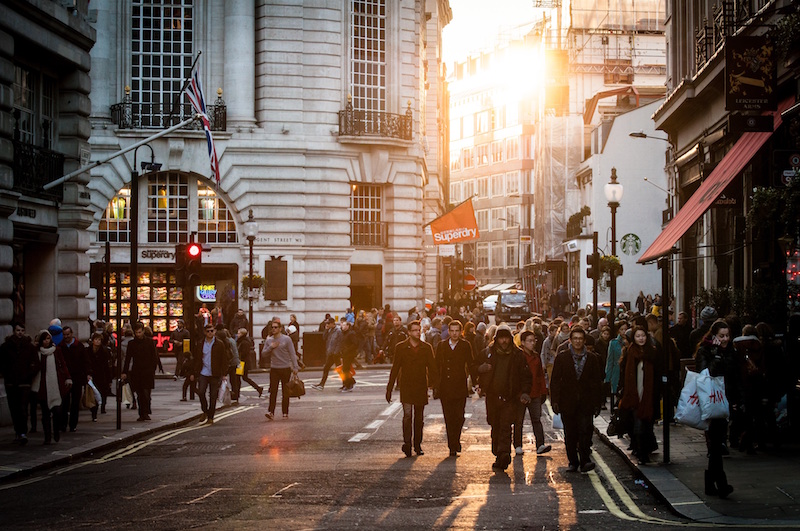What does an evil person look like?
In the wake of the 2013 Boston Marathon bombings, a not-unexpected thing happened in the social media sleuthing for the perpetrators. As readers of popular sites like Reddit pored over photos of the marathon public, they began to highlight suspicious looking figures. And by “suspicious,” many meant bag-lugging figures of potentially Middle Eastern countenance or some other vague nonwhite descriptor. Some, of course, in both the mainstream and the alternative media insisted (hoped?) the bomber(s) would be white, homegrown terrorists. But in both cases everyone sort of assumed they knew what evil looked like in this instance.


Then something strange happened. The photos of the bombers were released by the FBI. Turns out the perpetrators looked a little like everybody’s diverging presumptions assumed they would. Tamerlan and Dzhokhar Tsarnaev weren’t homegrown, perhaps, but they were sort of homeraised. They were Muslims, yes, but not Middle Eastern. From Russia’s Caucasus region, these fellows were literally from the place from which we get the word Caucasian.
Tamerlan was a little easier for our know-it-all eyes to read. The older brother with more visibly evident militant leanings—YouTube clips, hearsay from attenders at the local mosque and even family, concerns from Moscow about terror links, a much-reported trip to Russia the previous year.
But Dzhokhar? As my wife said, “He looks like just a baby.” Lots of people were echoing that sentiment. The very face of Dzhokhar—young, somewhat doe-eyed, moppyhaired like every other teenage boy in my town and probably yours—demanded the label “patsy.” From the minute the two were identified, speculators saw only his face and his place in the birth order and deduced he was coerced by his older brother, probably against his will, or somehow duped. Some suggested he was set up by the government.
When the media began to interview Dzhokhar’s former teachers and current classmates and friends, the insistence became deafening: “He’s not the type of person who would do this,” “He’s laid back,” we were told. “He’s cool. He listens to rap music and drinks beer (plays beer pong, even!) and smokes pot and gets with girls, which means he’s not a radical Muslim. Which means he’s not evil!” Or so they’d say.
When Terrorists Tweet
What exactly does evil look like, again?
Certainly not like the typical college kid, right? But then I think we need only see what this college kid did in the immediate days after he set down a backpack near children in order to murder them. He went to the gym to work out. He went to a party. (Friends say nothing seemed out of the ordinary.) He tweeted. I’m inclined to think that even if you were coerced, duped, and pressured to murder three innocent people (and a fourth a few days later) and injure many others, you wouldn’t act so nonchalant afterward. Nonchalance about one’s evil actions is exactly the face of evil.
And the idea that someone like a “chill” college kid could never murder anybody is simply ignorant. We know this from countless other newspaper headlines, but we also just know it inside. Just a few years of doing pastoral counseling has reaffirmed for me that “normal” people can do some very terrible things. Just a few moments of heart introspection will affirm that I am—and you are—quite apt at murderous thoughts, at the very least.
So what does evil look like?
I think it looks like you and me.
Not Beyond Hope
But then there’s this: nobody is beyond hope. Nobody is beyond redemption. There is no sin so great that God’s gospel is not greater still. Make no mistake: God is holy and just. It’s not graceless to suggest Dzhokhar’s older brother has already begun his eternal damnation. But it’s graceless to suggest it’s the only option awaiting Dzhokhar himself. The same apostle Paul who served and died for Christianity was previously one of its leading opponents and most violent persecutors. When he talks about the difference between being dead apart from Jesus and being alive in Jesus, he knows what he’s talking about. And as long as Dzhokhar Tsarnaev is breathing, there’s time to repent and believe. For he who knew no sin became sin for us, that we might be called the righteousness of God (2 Cor. 5:21). If that offends you, I don’t think you know what the face of evil looks like. Or the face of love.
Something happens, though, when we keep our eyes on Jesus. When we find the courage to take our eyes off ourselves, to stop rooting around in the pigsty of our culture for any piece of filth that smells like it might satisfy and to turn our face toward the heavens. We feel the sunlight. The broken mirror of our soul begins to pick up that radiant glow. And what do we see?
In 2 Corinthians 3:18, the same Paul who despaired about feeling caught between good and bad, the same Paul who said that apart from God we are devil-worshiping dogs in heat, says that if we will keep our face turned to Jesus, we will be transformed. In fact, he says that by gazing intently at Jesus’s glory, we will be changed, more and more, to resemble Jesus himself.
Editors’ note: This is an adapted excerpt from Jared Wilson’s new book, Unparalleled: How Christianity’s Uniqueness Makes It Compelling (Baker Books, 2016).
Is there enough evidence for us to believe the Gospels?





































